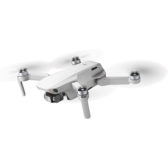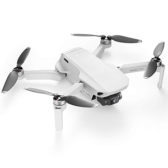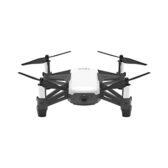The Best Mini Drones on the Market Today
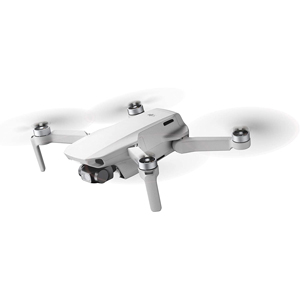
DJI Mini 2
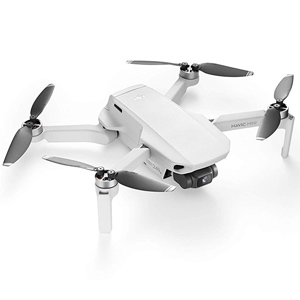
DJI Mavic Mini
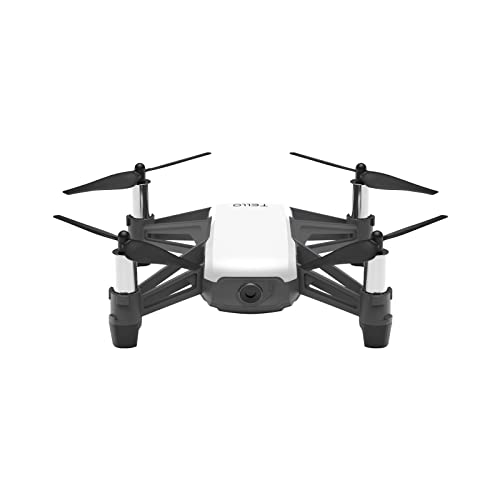
Tello Quadcopter
Technology always seems to go towards miniaturization.
While small drones were considered nothing more than toys only a few years ago, the best mini drones of today could arguably be described as true wonders of technology.
These bite-sized quadcopters can be used for multiple purposes and could even assist you in running your business. But, even as leisure gadgets, they are very entertaining to watch and even more fun to fly.
Tiny UAVs like these open the doors of drone piloting for more people — especially kids. They’re affordable, can be easily carried everywhere you go and deploy in a matter of seconds.
Regardless of if you need a quick selfie with your group, a panoramic shot of the area, or just want to have some fun, the best mini drones can do it all.
The Best Mini Drones 2021
We may receive compensation on qualifying purchases via our links. This does not change how we review items. For more information, please read our affiliate disclosure.
Our top rated mini drone with huge performance in a tiny body. Perfect for…everyone!

- This drone weighs less than 250g
- 12MP camera / 4K video, 4x digital zoom
- 3-axis motorized gimbal for image stability
- 10km range, max altitude of 4km
- Battery life: 31 minutes
DJI just can’t seem to stop releasing incredible drones.
The original Mavic Mini was our best ever value-for-money pick and now DJI have outdone themselves with the Mini 2.
We are blown away with the quality, performance and battery life that you can get with the DJI Mini 2 for a fairly affordable price. No, it’s not cheap, but its price falls far below most top products from competitors.
We’d say it’s now our favorite value-for-money pick by a long way, and it’s perfect for photography, videography, traveling, hobbyists and, well, everyone else too!
Better still, with its weight under 249g, it doesn’t even need to be registered with the FAA or CAA. That means you don’t need to be a registered drone pilot to fly this beauty.
+ Pros
- Cons
The DJI Mavic Mini is on the larger end of the spectrum of what is considered a miniature drone, but when it comes to the features it is on the very top.

- Flight Time: ~28 minutes
- Charge Time: ~90 minutes
- Range: 3000m / 9842ft
- Remote Controller: WiFi 5.4GHz & 2.4Ghz (included in the set)
- Camera: 3-axis gimbal 2K Camera with 12MP
- Live Video Transmission Range: 2500m / 8200ft
- Weight: 249g / 8.78oz
- Working Temperature: 0°C ~ 40°C
- Rated for indoor and outdoor use
The Mavic Mini is a compromise between size and utility. It is by no means a large drone, passing at 0.53lbs, but it has all of the systems found in its larger cousins; a phenomenal camera, lasting battery, and excellent GPS options.
For its size, the drone is exceptionally fast and maneuverable, easily gliding even in windy conditions. The brushless motor inside works wonders with the sensory system to gives you enough power when you need it.
Additionally, the sensory systems, including the GPS, work wonders. They allow even a novice drone pilot to fly easily and have no issues positioning their drone wherever they want.
Formerly, we needed large antennae if we want to have a lot of range, but the Mini has an incredible range on a slim and streamlined design.
The drone easily fits in the palm of your hand and is not heavier than a modern smartphone.
While it is easy to carry and folds its wings when not in flight, the shape doesn’t allow for it to be stored in a pocket. You will want to keep it inside a case, where it can fit into any purse, backpack, or bag.
Finally, the camera is a crown jewel of the Mavic Mini and is one of the best drone cameras on the market in general, let alone between miniature drones. It has a stable 4K resolution and can be easily used for all kinds of filming or photography projects.
+ Pros
- Cons
The Tello is probably one of the first full-featured mini-drones of its class, and it is a classic in every sense of the word.

- Flight Time: 10-15 minutes
- Charge Time: 75 minutes
- Range: 100 meters
- Remote Controller: none included; uses a smartphone app for control
- Camera: 5 megapixels at 720p HD resolution
- Weight: 82g
- Rated for indoor and outdoor use
Small and compact, this is made for you to carry it around and keep it by your side at all times.
Unlike many larger drones from DJI, the Tello is made to be fun and used by amateurs and children. It is easy to fly and very durable in case you misjudge your distance.
The drone has a good camera and a lot of advanced AI functions that will work directly with your smartphone. Using the DJI Fly app, you can use your phone to navigate the drone from an FPV perspective.
Power-wise, it is not exceptionally strong and might have issues in suboptimal weather. But, as it is small, you will be able to fly it when inside whenever a storm is brewing, and you want to fly a bit.
Probably the best feature of the Tello is the possibility to modulate its functions and program in different features.
This drone is made specifically for enthusiasts and students to learn how to code drones and the UI accessing these features if straightforward. With a bit of tinkering, you can teach the drone to do all kinds of tricks with just a push of a button.
Finally, the camera of the DJI Tello is not as advanced as something you would find on larger drones but is more than enough to take a few pictures and entertaining videos.
The stability makes the 720p video look bright and sharp, making it possible to use this drone for home videos and record your travels or family events.
+ Pros
- Cons
The Hubsan Q4 Nano became famous for being one of the smallest drones, if not the smallest drone, on the market.
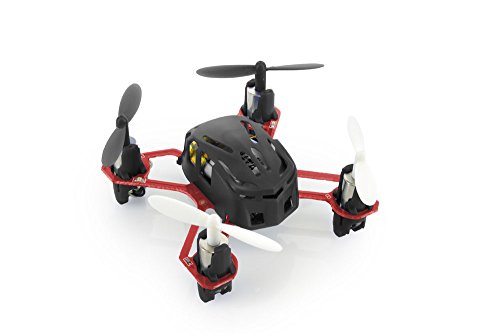
- Flight Time: ~6 minutes
- Charge Time: ~30 minutes
- Range: 15m / 50ft
- Remote Controller: WiFi & 2.4Ghz (included in the set)
- Camera: N/A
- Live Video Transmission Range: N/A
- Weight: 136g / 4.8oz
- Working Temperature: 5°C to ~ 35°C
- Rated for indoor and outdoor use
The size and weight are comparable to some of the smallest mobile phones ever made, or a large bumblebee, whichever you prefer. It is compact and sturdy, reaching amazing speeds for such small blades.
The durability of the H111 is based on the fact that the material is too tight for a weak spot. You might lose a blade during a fall, but that can be changed in seconds.
Additionally, the size makes the H111 practical to fly around the house. Unless you crash at full speed into something exceptionally delicate, there is little chance for this drone to damage your furniture.
But, you should keep the drone on ‘amateur’ mode when inside the house at all times. In expert mode, the device becomes much faster, and flying it through narrow spaces becomes much harder.
While the Nano is too small to fit a GPS, there are internal gyros made specifically to assist you in keeping the drone stable while flying it around.
+ Pros
- Cons
No products found.
The Shadow is a great option for those who want a good miniature drone, but don’t want to overspend before they are certain what they are after.
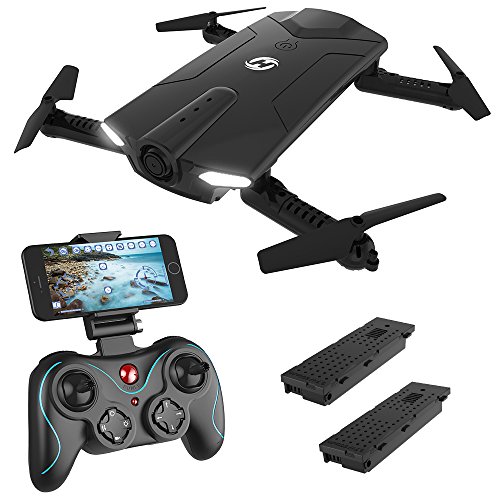
- Flight Time: ~8 minutes
- Charge Time: ~120 minutes
- Range: 70m / 230ft
- Remote Controller: WiFi 5.8GHz / smartphone (included in the set)
- Camera: 720p fixed HS camera
- Live Video Transmission Range: 30m / 100ft
- Weight: 82g / 2.92oz
- Working Temperature: ~-5°C to ~40°C
- Rated for indoor and outdoor use
HS160 compensates what may be considered last-gen components with an excellent AI, a good app, and a newer battery model. This makes the drone fly like a high mid-range drone while keeping the price more than affordable.
The included controller is very tactile and good for controlling the drone in an FPV mode as well as from the ground. Also, it has dedicated buttons for auto-pilot options, which will make flying much easier for a new drone pilot.
The camera is good, albeit not impressive for modern standards. The HD 720p floating camera is enough if you want to make a few shots from the air or take a few selfies, but it will not bring you any filmography awards.
When it comes to design, the Shadow took a few pointers from other drones on the market, making the lines smooth and the wings foldable to the inside of the drone. Once folded, the drone can even fit into a larger pocket while being comfortable in all other situations.
Finally, while the HS160 isn’t meant for flying in bad weather, it does have quite capable motors that will keep the drone steady in flight and provide you with a pleasant piloting experience.
+ Pros
- Cons
No products found.
The Sky Viper e1700 is a set of premade parts that you can connect in any way you wish and learn a lot about drones in the process.
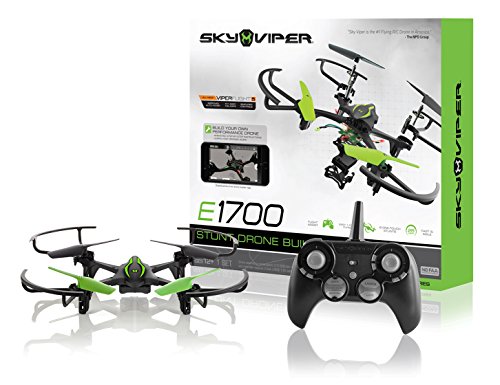
- Flight Time: ~8 minutes
- Charge Time: ~60 minutes
- Range: 30m / 100ft
- Remote Controller: WiFi 2.4 GHz (included in the set)
- Camera: N/A
- Live Video Transmission Range: N/A
- Weight: 75g / 2.64oz
- Working Temperature: 5°C to ~ 40°C
- Rated for indoor and outdoor use
Without any additions, the Sky Viper is a remarkably agile drone that can flip and turn in any bend. While not as fast as a racing drone, it can easily be regarded as a stunt drone.
Additionally, it can be modulated to execute full maneuvers and stunts on its own. With multiple dedicated buttons on the controller, you can make the drone do almost anything without any further input from the drone pilot.
In the firmware, there is an app that will allow you to program the drone however you like. Some trial and error will be needed, as is with any such process, but the result can be phenomenal.
The drone is very light and quite durable. On the flip side, it is not foldable and won’t easily fit into a bag, let alone a pocket. Carrying it in your glove compartment is probably the closest easy way to transport it easily and safely.
But, it will easily fly from your palm, and carrying it in your hand is easy even for a child.
If you want a drone that is light, entertaining, and an opportunity to learn about drone building and programming, then you will be amazed by the e1700.
Buyer’s Guide: What to Look for in a Mini Drone
When trying to choose between the best mini drones, there are several categories that you should take into account. There is no official designation of a mini drone, so it is important to know your own weight and size limits.
Generally speaking, mini-drones should be portable enough to fit in your pocket, purse, or backpack. Additionally, they should not pass the minimum weight needed to register with the Federal Aviation Administration (FAA).
But, some drones can be small in size and quite portable, but still, pass over 0.55lbs limit posed by the FAA. Also, there are light drones that are cumbersome and not as easy to carry around.
In all cases, it will be up to you to determine what constituted a miniature drone for your needs.
Best mini drones are those that can fit into our palm, but not everyone has palms of the same size.
Drone Size Categories
Technically speaking, any unmanned aerial vehicle (UAV) is considered to be a drone. Because that includes military and industrial aircraft, drones can weigh multiple tons if needed.
On the other side, a drone can be minuscule toys or devices that buzz around and weigh just a few ounces. With that difference, it is hard to make clear categories with a simple qualifier.
When it comes to commercial drones, it always best not to rely on labels and look for the designated weight. The magic number to look for is 8.8oz (or 0.55lbs) as the FAA requirement.
Registration is not that hard, and you should not worry too much if your drone is above this weight, but the less paperwork you need to do is always better.
In online communities, drones that are lighter than 4oz are considered ‘micro’ drones, and the ones up to 8.8oz (250g) are mini-drones.
The next line is 17,6oz, which are regarded as small, not because of the significant size difference but due to EASA (European Union Aviation Safety Agency) standards that allow these drones to be flown in areas that are deemed reasonably safe.
Medium drones are those that weight 4.4lbs or less, with the final category being drones under 25lbs, which are really large.
Once the weight and size exceed commercial drones, they will usually be called UAV for both legal and consumer purposes.
Weather Durability
Smaller drones can house comparatively smaller blades, which reduces their capability to deal with very strong winds or random gusts of air. But, with a powerful motor, this doesn’t mean that they are unusable when outside.
Drones that have brushless motors will be able to fly comfortably in stronger winds. This makes it possible to raise a mini drone high up into the air without the picture shaking too much or the blades failing to move the drone adequately.
Additionally, because of the higher material density, miniature drones are less prone to breaks and other damage than larger drones. Even if they fall, only the rotors are exposed enough, and they can be changed fairly easily.
The only downside of miniature drones is when it comes to water. Due to the small casing, it is hard to cover all of the parts and isolate them. A drizzle or moisture won’t necessarily hurt the electronics a lot, but any prolonged water exposure will fry their circuits.
Indoor and Outdoor
Modern drones are usually quite stable and won’t crash to the side unless you specifically order it, and sometimes not even then. But, larger drones push a lot of air and wiggle much more, making them very dangerous to fly indoors.
That is where mini drones come to shine, as the best mini drones will have no issues flying through narrow rooms or hallways. Additionally, even if they hit a piece of furniture, they won’t do much damage.
The only issue is that GPS won’t usually work inside. So, if you plan on using your mini drone around the house, make sure you buy one with additional sensors.
Having a barometer and proximity sensors will make the drone adjust its height and speed accordingly, giving you a lot more autonomous features and piloting options.
Additional Features
With miniaturization, the number of features available in miniature drones raises significantly. Depending on your needs, there is a lot that you can find even in the smallest drones.
But, it will always be a question which features are you willing to sacrifice and which might be essential to what you need. There will be a large difference between devices that are meant for taking selfies and ones you want to do tricks with and buzz around at high speeds.
Also, other features go outside the scope of what most people are looking for.
Using drones for orienteering, trekking, or hunting may be something you are interested in, but then you will want slight changes in design. UI capabilities will also be different.
Thankfully, many drones have multiple features that can pull double-duty for some needs. Picking out from the best mini drones available will usually help you in more ways than one.
Range and Battery Life
Energy consumptions are one of the biggest issues when it comes to drones. Batteries are heavy and not as efficient as chemical fuel. The more power drone needs, the larger and heavier battery should be inside, thus needing even more power.
In general, this makes mini-drones have a shorter range and battery life than some of the larger models, which is usually enough for most pilots.
On modern devices, this comparatively shorter range doesn’t need to be anything restricting. On high-end minis, this number counts several hundred feet, especially when it has GPS capabilities to assist it.
Finally, depending on the density of the battery, mini drones will be able to fly for enough time to fulfill their purpose.
Racing drones will have a shorter battery life but more power to the engines, while camera drones will allow the pilot enough time to look around and find their perfect shot.
GPS and Navigation
It is commendable if you are a type of person with patience and perseverance to slowly learn all the ins and outs of drone piloting through trial and error. But, for most people, you want to have as much fun as soon as possible.
While not all drones have a GPS, this technology allows for a lot of freedom and adds quite a bit of versatility to any drone.
By using a satellite, the drone will know exactly where it is on the Planet and move across the grid with ease. With the information received, it will also know how fast it is moving and what is the altitude of the terrain.
Drones that don’t have a GPS can still use sensors and barometers to move around safely. This set of tools is especially important indoors and places where GPS won’t reach.
But, unlike with a GPS, by only using internal sensors, you won’t be able to track the exact position of your drone without seeing the device with your own eyes.
Portability and Design
The general purpose of a mini drone is to carry it around easily. For that, it is as important to have a good design as it is for the weight to remain reasonably low.
In this aspect, you should pick out your miniature drone, depending on your favorite mode of transport. In some cases, it will be your car, where fitting in the glove compartment should be the best option.
Having a purse or a backpack is probably the best way to go. With a bit more space, you will be able to fit both flat and round models without any danger of damaging.
If you plan on carrying your drone in a pocket, you will need a slim design with foldable wings. While mini drones can sustain a bit more stress than a regular drone, there is no need to endanger your equipment more than it is absolutely necessary.
AI
Almost all modern drones use some sort of firmware, if not strictly internal logic systems, to help navigate the drone. In some cases, this system will be rudimentary, while in others, you may see quite advanced processing.
The general rule of thumb is that the newer you are in drone piloting, the more assistance you need from our silicone-based friends. Good AI helps with stability and can give a lot of auto-pilot functions that will keep the drone in the air while you get used to the commands.
Even when you become an expert, it is nice to have a system in place that will help you repeat the same thing all the time. AI assistance when taking off or landing leaves you to focus on enjoying your drone and nothing else.
Conclusion
While it is true that miniature drones will not have all of the professional features found in their much larger counterparts, they have a lot of other benefits that may make you pick a little drone over a large one.
For one, there is no need to register a little drone. You can fly it right out of the box and anywhere you want.
While you should wait to get the hang of drone piloting before going into highly populated areas, any park can be your flight course.
Finally, some of the best mini drones on the market have most of the features of large professional drones. These models will be more than capable of fulfilling all of your blogging or photography needs.

